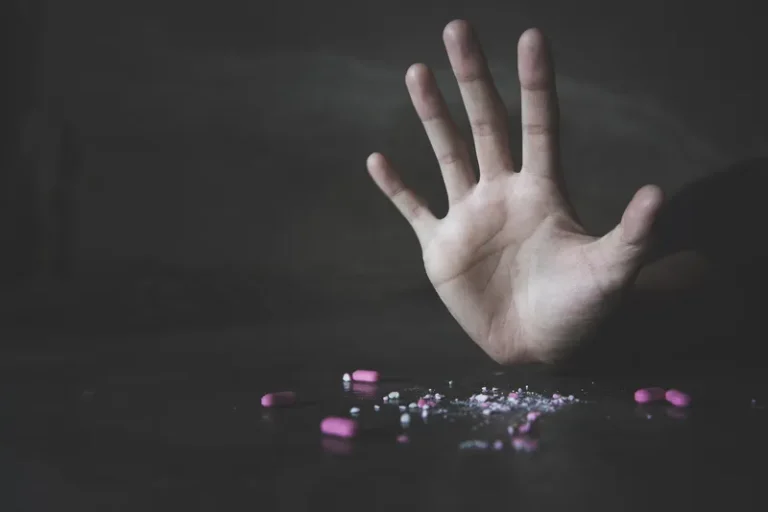What is Drug Addiction (Substance Use Disorder)?

Individuals who take drugs for recreational purposes, rely on pills to reduce stress, or increase the dosage of prescribed medications develop substance use disorder (SUD). The resulting cognitive impairment makes it challenging to adopt healthier behavior patterns. The disease has a disastrous effect on health and a person’s relationships with others. Opiates and marijuana are one of the main causes of the condition. The inability to control cravings makes it nearly impossible to avoid relapses at the withdrawal stage. Finding the motivation to stop taking substances is the only way to restore health. In this guide, we will analyze drug addiction and consider result-yielding treatment strategies followed by those who decide to become a functional member of society again.
Drug Addiction: A Complete Overview
SUD, or drug addiction, is a mental health condition that manifests in uncontrolled substance misuse, affecting the physical and psychological state of a person. It frequently starts as the use of recreational drugs under peer pressure or the misuse of prescribed painkillers. Some groups are more prone to develop an addiction, as they face difficulties trying to control their urges or suppress discomfort without resorting to pills.
People who take opioids regularly are at higher risk of developing SUD. They start thinking the recommended dosage is not enough to solve the issue. The destructive thoughts lead to cravings and frequent consumption, making a person physically ill.
Drug misuse happens when a person intakes various kinds of substances they are not allowed to. Some willingly increase the dosage, while others buy pills using other patients’ prescriptions, which is illegal. Multiple reasons drive individuals to start using drugs in ways that are not recommended. The feeling of elation is one of the most cited causes. Addicted individuals do not notice the signs of the disease until it becomes too late to change their habits without following a treatment strategy.
Addiction disrupts interpersonal relationships, leads to financial ruin, and causes emotional discomfort. The physical dependence on chemicals is accompanied by an increased tolerance to its effects, which further fuels SUD. Once the brain becomes affected, a person can no longer limit illicit substance intake. Some of the most widely used types of dangerous substances include the following:
- Cocaine
- Cannabis
- Methamphetamine
- Opioids
Each of these substances impacts the brain’s functioning. The release of dopamine makes a person experience intense joy. However, it comes at a high price. When combined with alcohol or nicotine dependence, some pills become ruinous.
The adverse effects of polysubstance utilization manifest in many negative ways throughout a lifetime. Getting assistance from a healthcare provider and finding a supportive environment are the most reliable ways to minimize the possibility of a relapse.

Begin your journey to recovery and take back control of your future.
Symptoms of Drug Disorder
It may be challenging to outline the generic signs of drug addiction, as they vary depending on the misused substances. The effects include the following:
- Intoxication: While this state does not last for long, it may disrupt sleep patterns, make a patient calmer, cause agitation, or evoke intense feelings. A person loses the capacity to think clearly and finds it difficult to make the right decision or comprehend simple questions.
- Withdrawal: These symptoms occur after a substance wears off. They include profuse sweating, vomiting, cramps, mood swings, diarrhea, and insomnia.
The strong desire to use a substance is indicative of SUD. Other common signs include:
- Willingly increasing the daily intake
- Multiple unsuccessful attempts to keep cravings under control
- Inability to fulfill social obligations
- The avoidance of typical activities
- Disrupted relationships
- High tolerance
When these signs start to manifest, it’s high time to get medical treatment.
Causes of Substance Use Disorder
According to research, some chemicals have a high propensity for dependence. They disrupt the stable functioning of the brain’s reward system. A person develops an addiction gradually, under the impact of such factors:
- Peer pressure
- The desire to experience the elation effect
- Emotional release from stress-related mental states
Besides, a person may take some seemingly harmless pills to enhance academic or work performance without realizing that their brain becomes addicted to the chemical components.
People with chronic pain could be advised to take specific pills and unwittingly increase the dosage, hoping to restore their health quickly. Experimental utilization of some substances does not have a noticeable impact on cognitive abilities. However, if an individual moves to occasional consumption and exceeds the recommended dosage or takes substances suggested by friends, it could lead to heavy dependence and result in severe drug addiction.
Risk Factors of SUD
The susceptibility to the effect of chemical components depends on a multitude of factors. Every person reacts differently to chemicals and has their limits. Multiple things make some people more vulnerable and less likely to be able to control cravings:
- Genetics: Having parents or other close relatives who suffer from drug addiction heightens the risk of the addiction, regardless of gender.
- Early use: When a child’s brain is still in the development stage, it can become easily affected. Even if they stop using pills, the cravings may return in adulthood.
- Poor mental health: Depression, problems with concentration, traumatic experiences, and chronic stress increase the chance of developing an addiction.
- Family issues: The lack of meaningful connections with others heightens susceptibility to drug abuse and dependence.
While there is no single risk factor, their combination is often disastrous. Limited peer refusal ability, poor parental supervision and support, poverty, and pill accessibility in the neighborhood worsen the risk. However, well-developed self-control abilities, positive relationships with other people, and supportive communities serve as powerful protective factors.
Complications of SUD
Drug addiction is characterized by severe side effects. An overdose occurs when an individual takes too many pills. It has a lasting impact on health and, in the worst outcome, results in death. Different chemicals target different areas. People who take too many opioids at once experience a sharp decline in cognitive ability and difficulties with breathing. Unless a patient gets admitted to a hospital and gets medical treatment, it might be impossible to save them.
Drug addiction leads to such outcomes:
- Cancer
- Depressive moods
- Infections
- Amnesia
Besides, a person is likely to engage in illegal or risky behavior, fail to meet academic or work obligations and experience interpersonal issues that further worsen their isolation.
How to Diagnose Drug Addiction?
Recognizing the signs of drug addiction requires evaluating a medical history and analyzing behaviors that changed as a result of increased substance intake. Healthcare professionals often suggest taking a test to identify the chemicals present in the body. Using reports containing data from prescribed medicine monitoring programs allows specialists to get invaluable insights. Asking questions about mental health issues is also common.
Getting diagnosed with SUD requires having at least two signs of drug use mentioned in the DSM-5. The condition has various degrees of severity depending on the number of manifested symptoms:
- Mild (2-3)
- Moderate (4-5)
- Severe (6 and more)
Interviews with family members could be necessary when working with children and young adults.
How to Prevent SUD?
The most productive approach to staying healthy is to take steps to diminish the threat of developing a drug addiction. Educational programs have a decisive role in ensuring schoolchildren will be less inclined to experiment with substances. Community support and close parental supervision are essential to help a child become fully aware of the consequences of misuse. Other measures include:
- Following a doctor’s recommendations
- Storing medications in a safe place
- Discovering coping techniques to deal with stress
Relapses are unavoidable on the way to getting healthy. When they happen, a person should be ready to go into a detox program again and restart the healing process while staying aware of possible obstacles along the way.
Developing a reliable support system is a prerequisite to achieving success. Reviewing the roadmap with the assistance of a healthcare provider is also crucial to adjust the adopted approach and ensure it meets your goals.

Recovering is a long and challenging process, but you don’t have to be alone. We are here to guide you and offer a safe and substance-free environment to regain control of your life and create a new path for your future.
Effective Treatment Strategies
Managing withdrawal symptoms is the first stage of dealing with drug addiction. When an individual stops using pills, they should consult with a specialist to learn how to lessen the impact of cravings. This period requires discovering willpower to transform destructive habits. After the initial detox stage, one should combine time-tested treatment strategies to achieve sustainable results.
Going to therapy sessions is the only way to improve mental health and learn how to deal with anxiety. Recognizing triggers and adopting productive techniques of reacting to them is necessary to minimize the occurrence of relapse.
Medication-assisted treatment involves taking prescription pills recommended by the FDA. Staying under constant supervision during the initial period is also important to remain healthy. Optimal programs should be personalized for an individual to get the best care.
Therapeutic interventions include the following:
- Assertive community treatment: A patient can benefit from counseling services in a community setting, as this approach is highly individualized.
- Cognitive behavioral therapy: It facilitates detecting dangerous behaviors and embracing new coping mechanisms.
- Contingency management: This approach focuses on setting achievable goals and reinforcing the progress with rewards.
After limiting drug use, achieving full recovery requires combining various interventions and finding a safe setting to recuperate. Staying among people who share similar aspirations is one of the most productive methods. Eco Sober offers a housing program devised for the needs of those who want to enhance their social skills and train their capacity to resist temptations related to increased consumption. Our clients appreciate the opportunity to adopt healthier values and behaviors when living with highly motivated individuals who want to remain abstinent and free themselves from drug addiction. Get in touch with our managers today and discover the advantages of our program for those who want to practice restraint.




